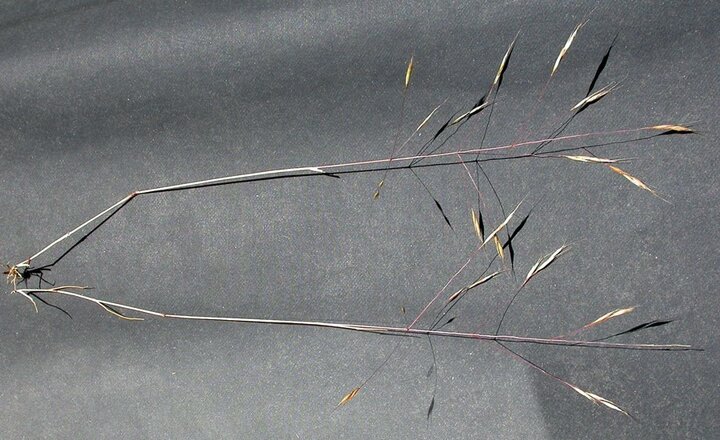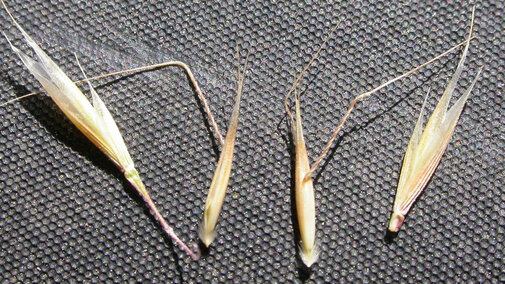Early Detection and Rapid Response (EDRR) is a concept to identify potential invasive species prior to or just as they are becoming established. Early detection allows for development of an integrated pest management plan to contain and eradicate the invasive species before it spreads further. This will avoid costly, long-term control efforts.
Ventenata and Medusahead are invasive grasses that have been identified in parts of Wyoming and are now slowly spreading east. While neither has been identified in Nebraska, we need to be aware of what these grasses look like and how they spread so we can be prepared to deal with them should they show up in our state. If they become established in the Pine Ridge area or Sandhills, they could devastate the ecology and range production.
Ventenata
- Also known as: North Africa grass, Wiregrass, Avena dubia Leers, Ventenata avenacea Koel.
- Scientific name: Ventenata dubia (Leers) Coss.
- Family: Poaceae / Gramineae
- Origin: Western Asia, southern Europe, northern Africa. First reported in North America in 1952, Ventenata is found in the northwest and northeast U.S. and the western and eastern provinces of Canada.
Ventenata is an exotic, invasive, self-pollinated, shallow-rooted winter annual grass that is tawny to light yellow. It germinates in the fall and overwinters as a seedling. It is typically 4-20 inches tall. The leaves are folded or rolled lengthwise and appear narrow. Each plant may produce 15 to 35 or more seeds. The inflorescence is an open panicle, pyramidal in shape. The nodes turn a reddish-black color in May-June. Awns become twisted and bent when plant senesces in July-August. Seed longevity is two to three years. Ventenata has been shown to displace cheatgrass and Medusahead.

Ventenata has a high silica content and is slow to decay. Long-distance Ventenata seed distribution can be attributed to contaminated seed, crops, hay, animals and human activities. The long Ventenata seed awns help the seed adhere to clothing and hair of animals to help with its dispersal. Ventenata is generally found on south-facing slopes with heavier, rocky soils.
Ventenata’s high silica content makes it a less desirable forage, but it can be grazed early – timing is important. It can replace desirable perennial grasses and forbs in rangeland, pastures, CRP and hay meadows. Heavy infestations can reduce forage production by 50% within a few years. With the loss of production, land values decrease and ecological biodiversity is severely impacted. In rangeland and pasture proper grazing management practices that maintain a diverse and healthy native plant community are key to preventing establishment of Ventenata.
Burning shows no promise as a control measure. Ventenata’s rapid growth early in the growing season allows it to flourish after prescribed burns. Hand pulling and removal in small sites can be effective, but labor intensive. Multiple rotary mowings after each flush and prior to heading may help reduce seed formation. Revegetation must be carefully considered due to timing and precipitation events needed for germination of the desirable species.
Chemical applications can be effective, but costly. Many herbicides are labeled for Ventenata management, including glyphosate, imazapic, and other products. Be sure to read, understand and follow all label directions. Application timing can be critical for proper control. Follow-up treatments may be required. The site/crop to be treated must be on the label.
Prevention is the best means to control Ventenata. Once found, a strategy integrating several management options will be more effective than a single practice to control this invasive weed. Monitoring and follow-up treatments usually will be needed to keep the Ventenata in check and limit its spread.
References
NRCS Plant Guide, Ventenata, Ventenata dubia (Leers) Coss.
NRCS Plant Profile, Ventenata, Ventenata dubia (Leers) Coss.
Prather, T. and V. Steele, Ventenata Control Strategies Found for Forage Producers, University of Idaho

